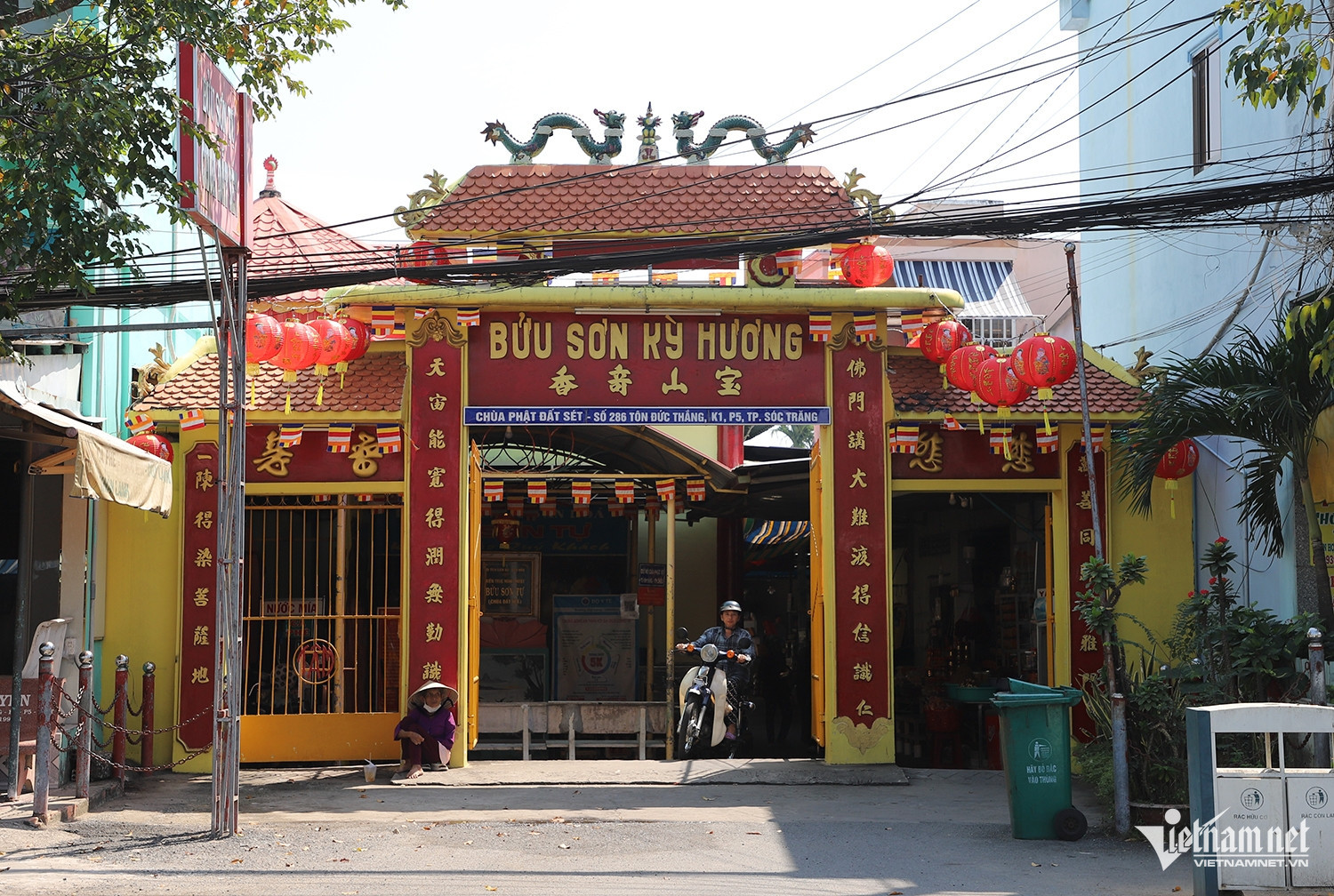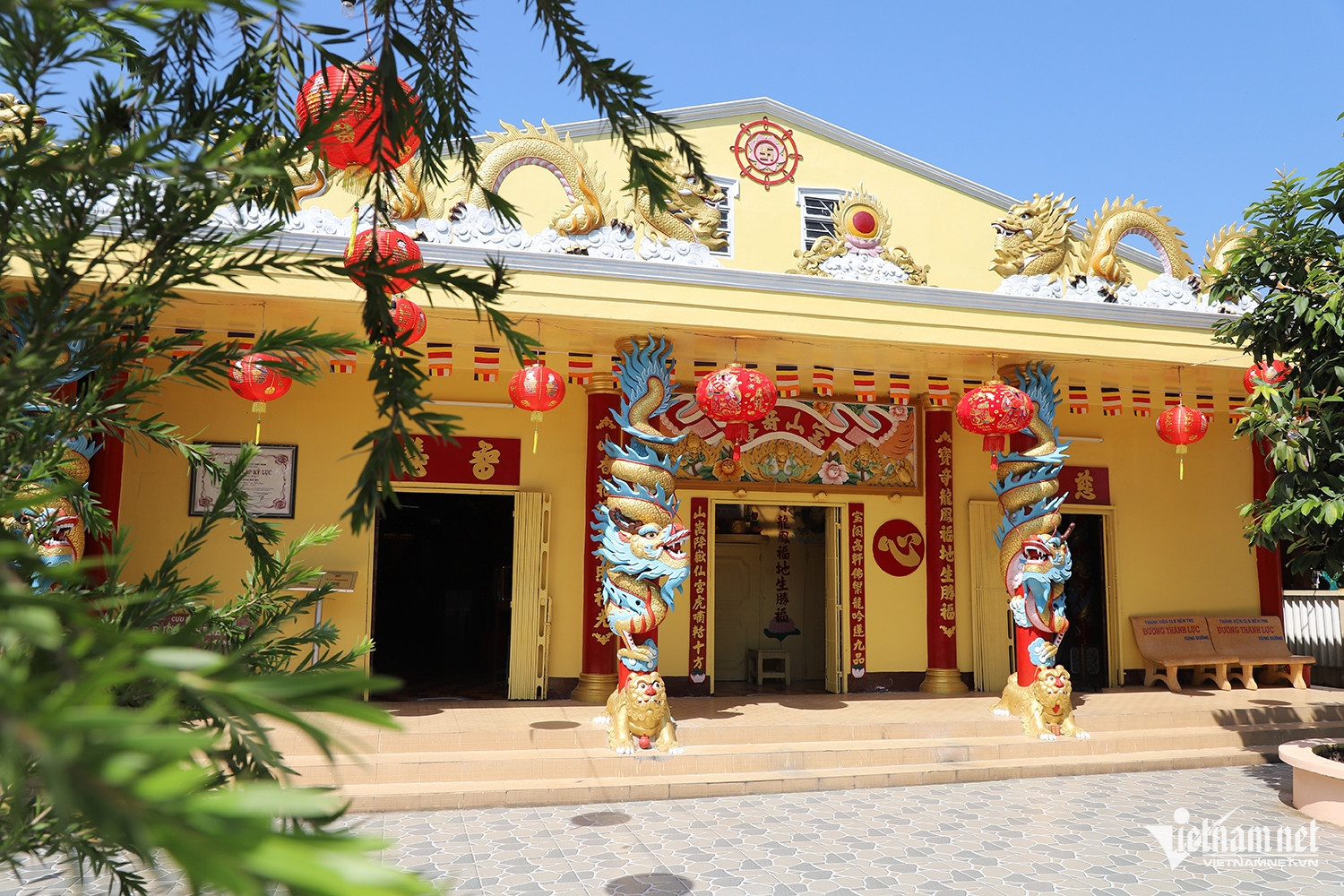Buu Son Tu, also known as Chua Dat Set (Clay Pagoda), houses nearly 2,000 clay statues and eight giant candles weighing a total of 1.4 tons.
A temple crafted from earth
Located on Ton Duc Thang Street in Ward 5, Soc Trang City, Soc Trang Province, Buu Son Tu was built nearly 200 years ago by a man from the Ngo family who wished to dedicate his home to spiritual practice.
Unlike other temples that feature wood, gold, silver, or bronze artifacts, this pagoda is unique for its use of clay - a material rarely employed in sculpture due to its difficulty in shaping and preserving.
Initially, the site was merely a small thatched shrine with a modest altar. It wasn't until the fourth-generation caretaker, Ngo Kim Tong (1909–1970), took over that the temple underwent significant renovation and expansion.
Over the course of 42 years, Ngo Kim Tong meticulously crafted nearly 2,000 clay statues, turning the temple into a masterpiece of clay artistry.
According to temple records, the clay was sourced from uncultivated wetland areas. After drying, it was finely ground, sifted to remove sand and impurities, and mixed with incense powder and resin before being molded onto pre-made wire frames. Despite being made of clay, the statues exhibit a rich, lifelike appearance, resembling wood sculptures.
A sacred space of remarkable craftsmanship
One of the temple’s most awe-inspiring structures is the Bao Toa Lien Hoa (Lotus Throne), featuring 1,000 intricately sculpted lotus petals, each bearing a meditating Buddha.
Beneath the lotus pedestal is the Bat Quai Thien Tien (Eight Trigrams Celestial Realm), depicting eight mythical figures representing the trigrams: Can, Kham, Can, Chan, Ton, Ly, Khon, Doi. Each trigram is accompanied by two celestial maidens in reverence.
Adjacent to this is the Da Bao Tower, a 4-meter-tall, 13-tiered structure that Ngo Kim Tong built in 1939 at the age of 30. Each tier of the tower features 16 doors, with a Buddha statue enshrined in each opening.
Beyond its exquisite clay sculptures, Buu Son Tu is also renowned for its massive candles. In the final years of his life, instead of sculpting statues, Ngo Kim Tong dedicated himself to crafting these monumental candles to illuminate the temple’s main hall. He melted large quantities of wax in an industrial-sized cauldron and poured it into metal sheets, forming cylindrical molds standing 2.6 meters tall. The candles were then inscribed with golden calligraphy and adorned with intricate dragon motifs, their shapes shifting between visibility and concealment along the waxen surface.
In just a few months, Ngo Kim Tong successfully cast six large candles, each weighing 200 kilograms, and two smaller ones at 100 kilograms each. The two smaller candles were lit on July 18, 1970 - the day of his passing - and have continued burning for nearly 55 years.
In 2010, the People's Committee of Soc Trang Province designated Buu Son Tu as a provincial-level architectural and artistic heritage site. On September 21, 2013, the Da Bao Tower and Bao Toa Lien Hoa were officially recognized by the Vietnam Records Organization as extraordinary clay-based religious structures.

Buu Son Tu, also known as Dat Set Pagoda, is located on Ton Duc Thang Street, Ward 5, Soc Trang City, Soc Trang Province. The pagoda was built nearly 200 years ago by a man from the Ngo family for home worship. It is famous for its artifacts, which are not made of wood, gold, silver, or bronze, but from clayb - a material that is difficult to craft.


 |
 |


The pagoda is not only famous for its thousands of clay statues but also for its giant candles.

